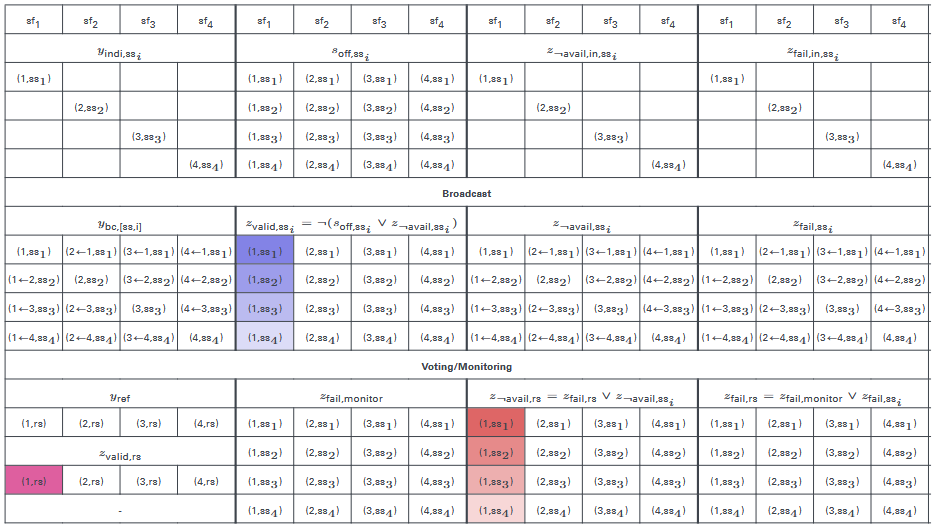System Design 1 - Chapter 6
20 June 2025, Bastian Luettig
Consolidation Management

- in the first block (above broadcast), there is the individual single computer-internal data
- all single computers perform a broadcast of the individual information and now each single computer lane has the information from each other computer lane (be aware: a lane might not tell the truth)
- each computer lane creates a voting / reference value $y_{\text{ref}}$, performs monitoring between the individual values and creates a monitoring failure indication
- each computer lane $o$ creates fail state information
- each computer lane $o$ creates not avail state information
- each computer lane $o$ checks, if the yref-value was obtained from sufficiently valid sensors
Simmilar diagram for discrete sensors is available on slide 55 onward, chapter 6
In case of correct sensors, discrete sensors have $A_\in$ when and analog sensors have $A_\Delta$ after data acquisition by drivers
Resource Management
Based on the failure categories set by the consolidation management, the resource manager will passivate sensors
- Input Consensus is required to fulfill output consensus among redundant computers
- Sensor types are categorized into simple and complex (bus-based)
- Single sensors follow discrepancy models (analog: $A_\Delta$ and discrete: $A_\in$)
- Input Consolidation Management handles availability and failure detection at the individual computing lane
- Cross-Sensor Consolidation ensures correctness by comparing multiple single sensors
- If at least two sensors are valid, valid-voting is performed; otherwise, avail-voting. If no sensors are available, a default value is returned
- Faulty sensors are passivated if their values deviate too far from the reference value
- The PLAMA sensor ensures $A_\Delta$ for analog sensors and $A_=$ for discrete sensors